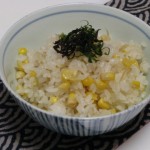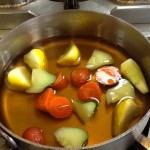We always talk eat healthy. But, it takes courage and determination to take an action and practice it. If you decided to eat healthy in 2015, I recommend that you introduce at least one or two weekly/monthly Japanese dishes or meals in your diet. You can find recipes from this blog site throughout the year (are you going to try my latest vegetable udon dish?) or from my books, The Japanese Kitchen, The Sushi Experience and Hiroko’s American Kitchen.

Traditional Japanese meal is definitely healthier in many ways compared to some other world cuisine. No dairy products are used. The use of protein and vegetables in a dish or in a complete meal is balanced. Fish and rice play important role as staples. Dashi (Japanese clean and lean stock made from water, kelp and skipjack tuna) plays the same role in the preparation of dishes as does oil in other world cuisine. The Japanese meal is composed with several different dishes: carbohydrate, protein and vegetables are balanced in a meal. The serving portion is small, but satisfactory, human-size portion.

I, though, admit that some of the Japanese dishes are high in sodium, because the key staples used to flavor Japanese dishes are shoyu (soy sauce) and miso, which are high in sodium. Traditionally we used more salt (salt in the form of shoyu and miso) and sugar in the preparation for the preservation purpose in the age of no refrigeration. Today in Japan we are using less of them because everyone’s home is equipped with refrigerator and freezer. I will show you how to tackle with sodium problem in the healthy Japanese meal in my next blog. Please stand by.
